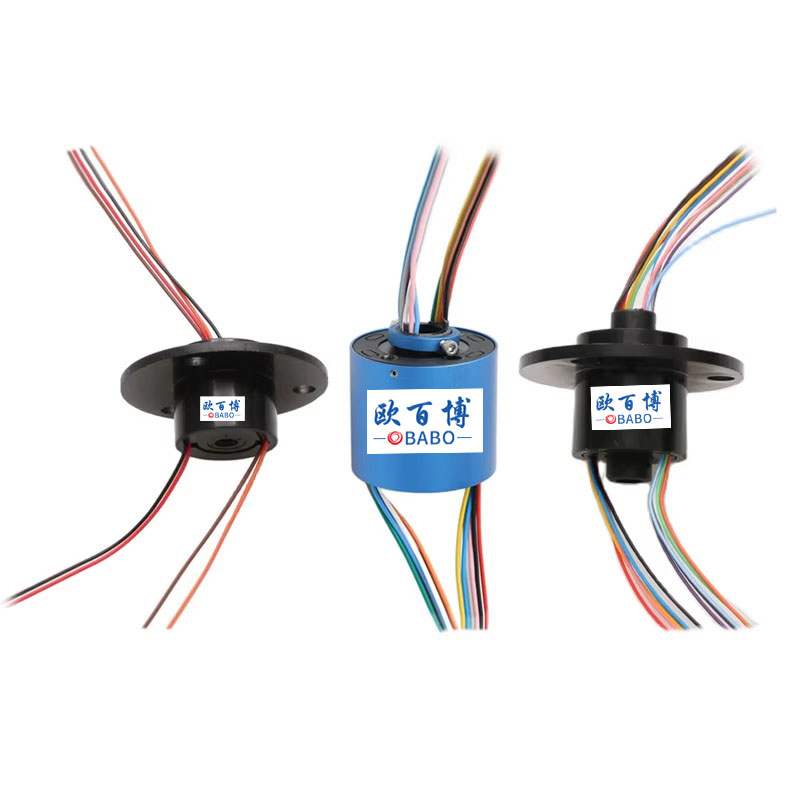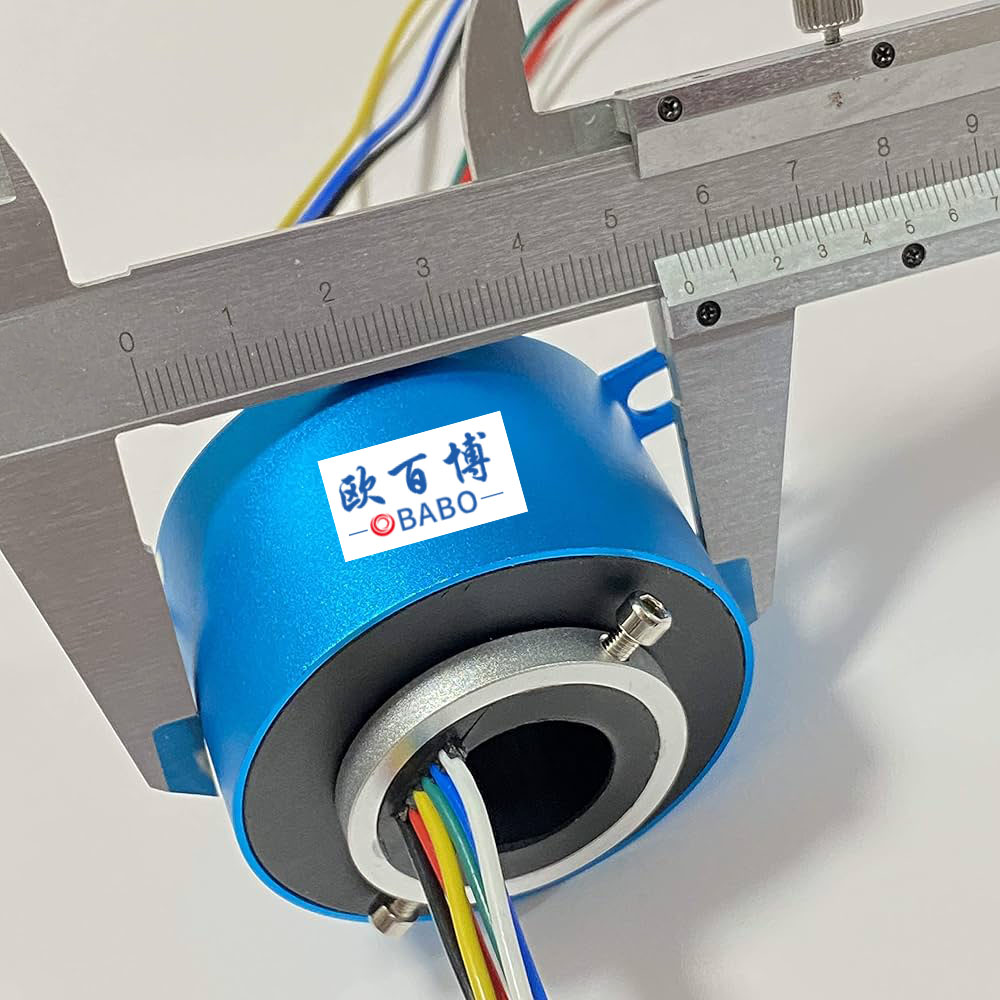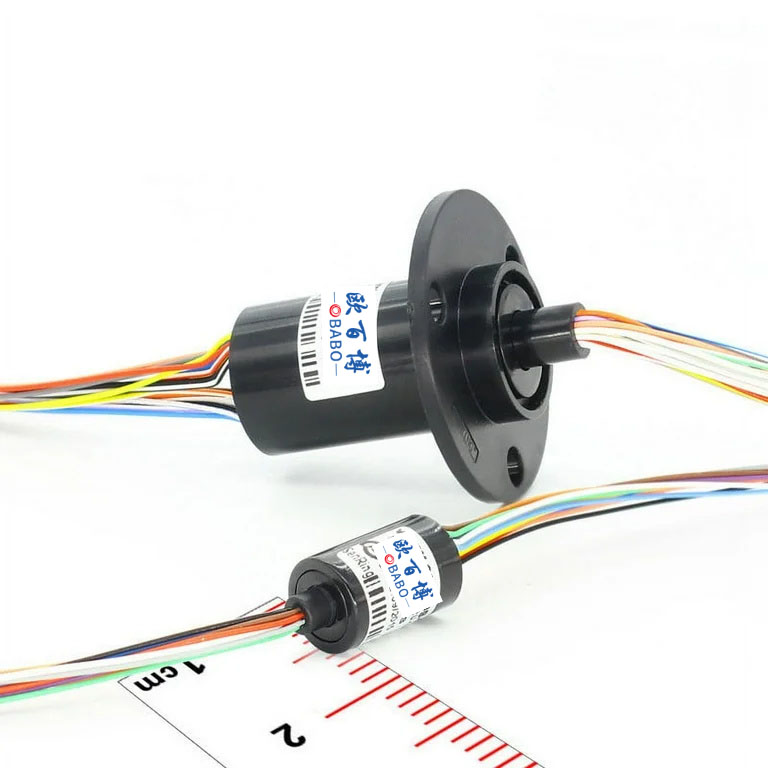

What is a Slip Ring Electrical Connector?
A slip ring electrical connector, also known as a conductive slip ring or a rotary electrical connector, is an electrical component used to transmit electrical energy, signals or data in a rotating structure. It solves the problem of traditional cables being entangled due to rotation, allowing the device to rotate 360 degrees without restriction while maintaining continuous transmission of electricity or signals.

How it works
Slip rings usually consist of two basic parts:
Rotor: connected to the rotating part
Stator: connected to the fixed part
The current/signal contacts the stator to the rotor (or vice versa) through brushes (usually precious metals or graphite) to achieve electrical connection. During the rotation of the device, the brushes inside the slip ring slide on the ring, thereby maintaining uninterrupted signal or power transmission.
| Category | Parameter | Specification / Description |
|---|---|---|
| Channel Count | Power Channels | 1–N (customizable) |
| Signal Channels | 1–N (Analog / Digital available) | |
| Electrical | Max Current per Channel | 1 A / 10 A / 50 A / 500 A (custom options) |
| Max Voltage per Channel | 0–600 V (up to 10 kV for high-voltage) | |
| Signal Support | Supported Protocols | CAN, RS485, Ethernet, HDMI, USB, Profibus |
| Data Transmission Rate | Up to 10 Gbps (depending on protocol) | |
| Mechanical | Operating Speed | 0–500 RPM (higher available upon request) |
| Mechanical Lifespan | Over 10 million revolutions (typical) | |
| Mounting Options | Shaft Mount / Flange Mount / Through-bore | |
| Environmental | Protection Rating (IP) | IP51 / IP65 / IP68 (optional) |
| Operating Temperature Range | -40°C to +85°C | |
| Materials | Housing Material | Aluminum Alloy / Stainless Steel / Plastic |
| Dimensions | Outer Diameter / Height | Customized to fit application |
 Data transmission speed
Data transmission speed
Traditional slip ring (analog signal): less than 10 Mbps
Digital signal slip ring:
Ethernet slip ring: 10/100/1000 Mbps (up to 10 Gbps)
Fiber optic slip ring (FORJ): up to 40 Gbps+
USB/HDMI support: supports high bandwidth transmission according to the protocol version
Signal integrity
High-quality brush materials (such as gold-gold contacts) can greatly improve signal integrity
Multi-layer shielding structure can reduce EMI (electromagnetic interference)
Separated signal and power channels to reduce crosstalk
Dedicated channel design for high-speed signals (such as Ethernet/HDMI)
Current and voltage requirements
Current and voltage depend on the specific application, and common ranges are as follows:
Current range:
Small signal slip ring: < 1 A
Industrial power slip ring: up to 500 A or more
Voltage range:
General slip ring: 0–600 VAC/VDC
Special design: High voltage can support up to 10kV (such as slip rings for high-voltage power transmission)
Advantages
Supports 360° continuous rotation
Can transmit power + signal + data simultaneously
Compact structure, easy maintenance
Customizable number of channels, voltage and current levels, shell protection level, etc.
Adapt to multiple communication protocols: CAN, Ethernet, HDMI, USB, RS485, Profibus
Applications
Aerospace radars
Medical equipment (such as CT scanners)
Industrial automation (packaging machines, rotating platforms, robots)
Wind power generation systems
Marine communication antennas
Camera/monitoring pan/tilt-zoom (PTZ camera)
FAQ
Why does the slip ring produce signal interference or data packet loss?
This is usually caused by the following reasons:
The brush has poor contact with the ring (wear or carbon deposition)
The model that is not suitable for high-speed signal transmission is used (slip rings that support shielded/differential signals must be selected)
The power channel and the signal channel are not well isolated, resulting in crosstalk
Solutions include: replacing high-quality brush material slip rings, selecting dedicated high-speed data slip rings (such as supporting Ethernet, USB) or adding EMI shielding.
What should I do if the slip ring generates heat or abnormal noise when rotating at high speed?
Heating or noise may be caused by the following problems:
Exceeding the rated speed or current
Insufficient internal lubrication or loss
Axis deviation caused by non-level installation
It is recommended to check whether the installation method and the range of use are within the rated value, and regularly maintain or replace the grease.
Can the slip ring be used outdoors or in harsh environments?
Yes, but you need to choose a model with a high protection level (such as IP65/IP68) and confirm whether it has salt spray, corrosion, dust or explosion-proof characteristics. For extreme temperature environments (such as below -40°C), special materials and lubricants are required.
How long is the life of a slip ring? How to extend it?
The life is usually several million to tens of millions of revolutions, which is affected by factors such as material, rotation speed, current size, and use environment.
Ways to extend the life include:
Regular maintenance and cleaning
Control the working current and voltage not to exceed the limit
Select gold brushes and gold rings or precious metal contact materials
Install dust covers to reduce pollution
Can slip rings transmit power and data at the same time? Will they interfere with each other?
Yes. Modern slip ring designs already support mixed transmission of power + signal + data, but it should be noted that:
The power supply and data channels should be physically isolated
Select channels with shielding design (especially high-speed digital signals)
For high-demand scenarios, it is recommended to use independent modules or multi-channel slip ring structures
How to determine whether the slip ring is worn or needs to be replaced?
Common signs of wear include:
Large signal fluctuations and occasional interruptions
Obvious heat and burning smell
Increased noise or rotation jamming
Regularly check the condition of the slip ring brushes and contact surfaces. It is generally recommended to maintain and inspect them every 6-12 months.